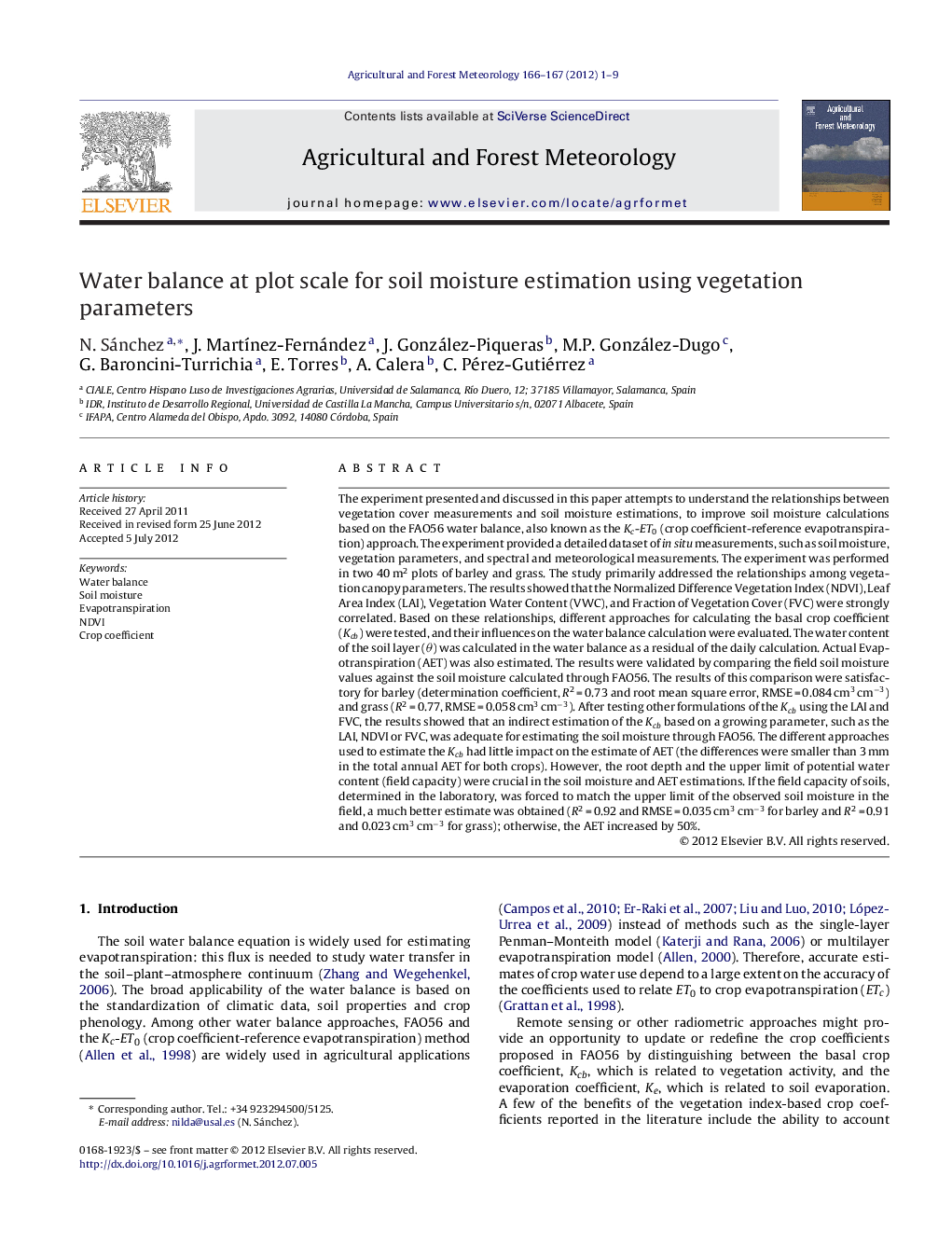| کد مقاله | کد نشریه | سال انتشار | مقاله انگلیسی | نسخه تمام متن |
|---|---|---|---|---|
| 81866 | 158355 | 2012 | 9 صفحه PDF | دانلود رایگان |

The experiment presented and discussed in this paper attempts to understand the relationships between vegetation cover measurements and soil moisture estimations, to improve soil moisture calculations based on the FAO56 water balance, also known as the Kc-ET0 (crop coefficient-reference evapotranspiration) approach. The experiment provided a detailed dataset of in situ measurements, such as soil moisture, vegetation parameters, and spectral and meteorological measurements. The experiment was performed in two 40 m2 plots of barley and grass. The study primarily addressed the relationships among vegetation canopy parameters. The results showed that the Normalized Difference Vegetation Index (NDVI), Leaf Area Index (LAI), Vegetation Water Content (VWC), and Fraction of Vegetation Cover (FVC) were strongly correlated. Based on these relationships, different approaches for calculating the basal crop coefficient (Kcb) were tested, and their influences on the water balance calculation were evaluated. The water content of the soil layer (θ) was calculated in the water balance as a residual of the daily calculation. Actual Evapotranspiration (AET) was also estimated. The results were validated by comparing the field soil moisture values against the soil moisture calculated through FAO56. The results of this comparison were satisfactory for barley (determination coefficient, R2 = 0.73 and root mean square error, RMSE = 0.084 cm3 cm−3) and grass (R2 = 0.77, RMSE = 0.058 cm3 cm−3). After testing other formulations of the Kcb using the LAI and FVC, the results showed that an indirect estimation of the Kcb based on a growing parameter, such as the LAI, NDVI or FVC, was adequate for estimating the soil moisture through FAO56. The different approaches used to estimate the Kcb had little impact on the estimate of AET (the differences were smaller than 3 mm in the total annual AET for both crops). However, the root depth and the upper limit of potential water content (field capacity) were crucial in the soil moisture and AET estimations. If the field capacity of soils, determined in the laboratory, was forced to match the upper limit of the observed soil moisture in the field, a much better estimate was obtained (R2 = 0.92 and RMSE = 0.035 cm3 cm−3 for barley and R2 = 0.91 and 0.023 cm3 cm−3 for grass); otherwise, the AET increased by 50%.
► Field-based vegetation estimations were tested in a water balance.
► Different plant parameters showed to be able to estimate the basal crop coefficient.
► The approaches to define the crop coefficient showed little influence in the water balance calculation.
► The soil properties and the root depth are critical in the soil moisture calculation.
Journal: Agricultural and Forest Meteorology - Volumes 166–167, 15 December 2012, Pages 1–9